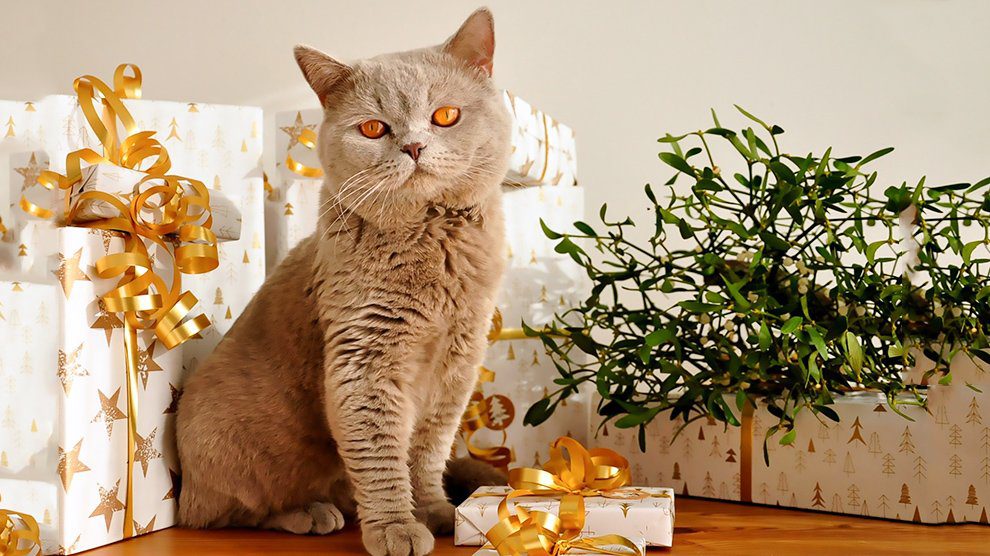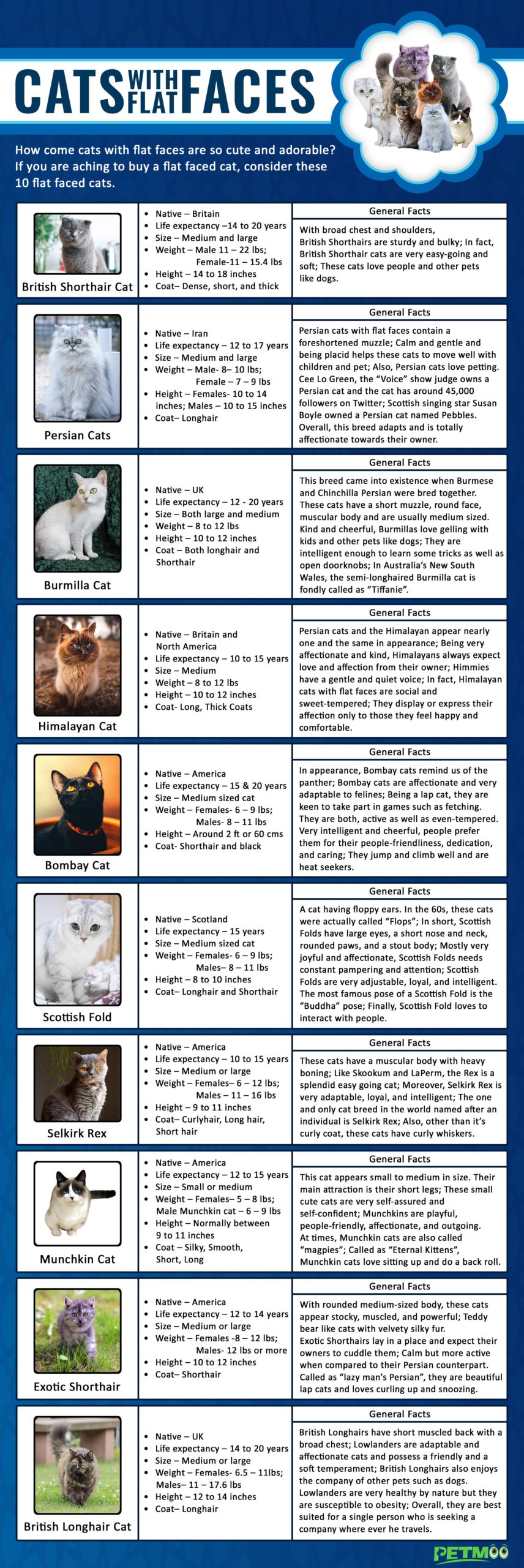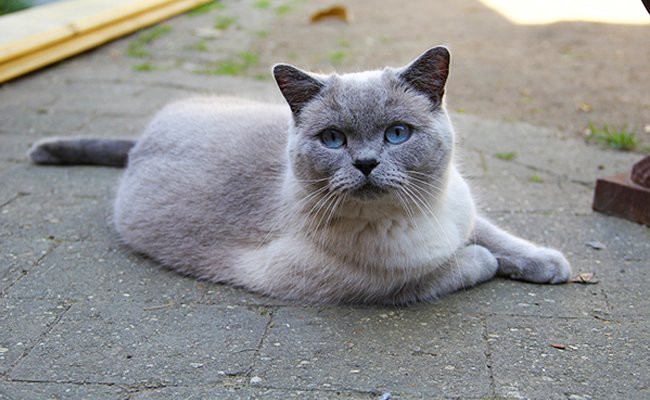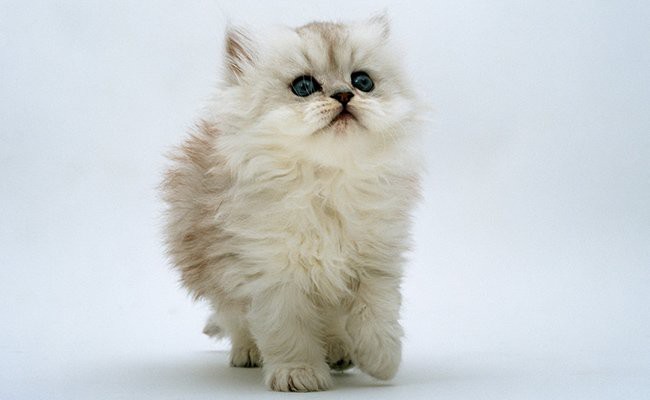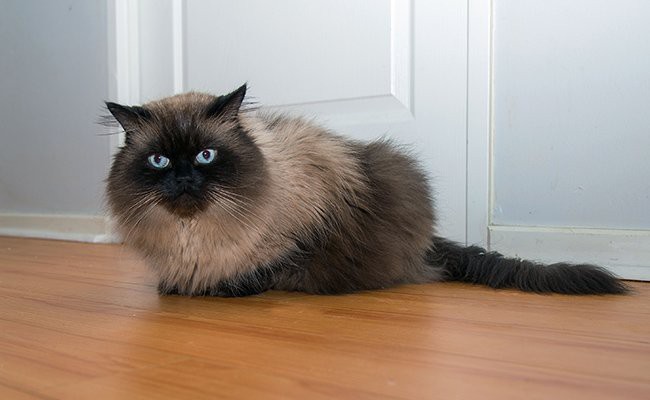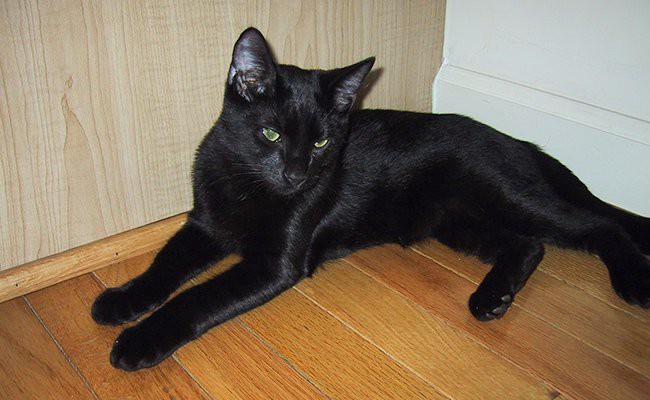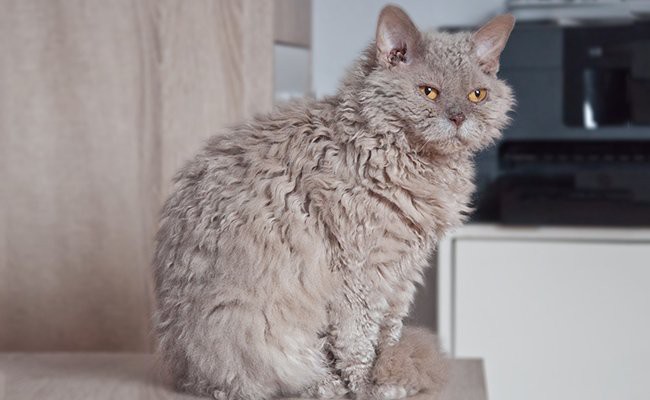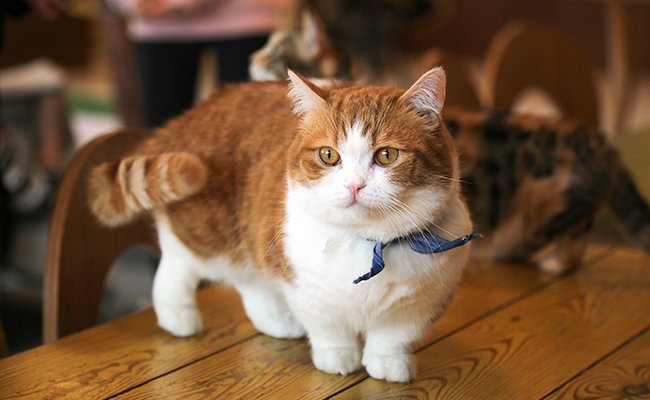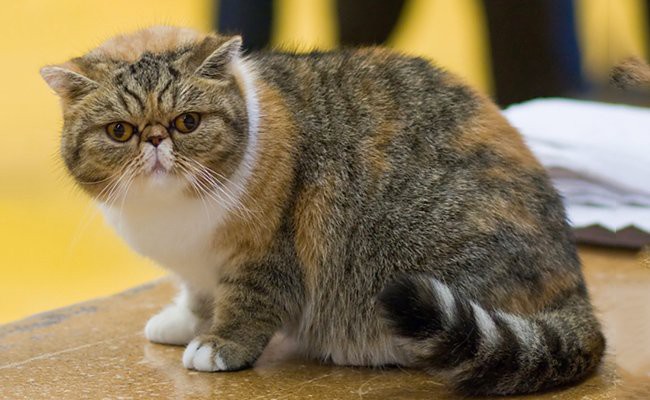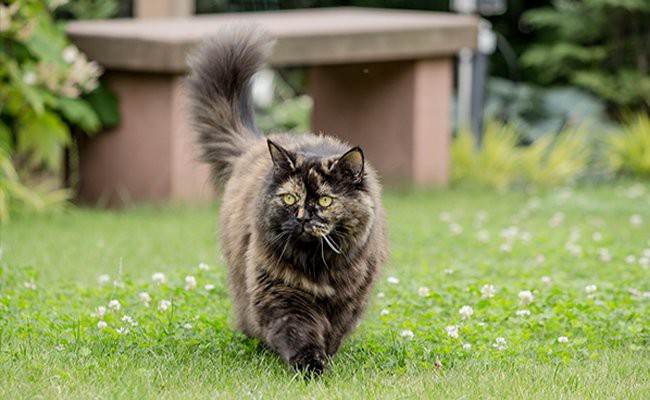Cat Pregnancy Calculator And Timeline
Wow!!! How come cats with flat faces are so cute and adorable?
Probably, it could be due to anything ranging from their cuddly stuffed toy like looks, outstanding shoe-button eyes or their mushy pug eyes. However, do remember that these cute little softies are living beings like us.
In other words, those crushed faces can melt even the cruellest of hearts. Therefore, if you are aching to buy a flat faced cat or a smashed face kitten, then consider these 10 flat faced cats.
British Shorthair Cat
- Native – Britain
- Life expectancy – Between 14 to 20 years
- Size – Medium and at times, large
- Weight – Male British Shorthair – 11 – 22 lbs; Female British Shorthair – 11 – 15.4 lbs
- Height – 14 to 18 inches
- Coat and color – Dense, short, and thick
- Talkativeness – Silent
- Grooming pattern – Every seven days
- Attention requirement – Low
- Activity level – Low
Just tune in to those mesmerizing eyes and you will realize why people crave for the British Shorthair cats. In brief, British Shorthair cats with flat faces have a 100-year-old history and are the most popular cat breed in Britain.
British Shorthair Cat Facts
Appearance
With broad chest and shoulders, British Shorthair cats with flat faces appear sturdy and bulky. In addition, these cats have pretty rounded legs. Other features of this breed are round heads, plush broad tails, and eyes are round and large.
In general, male British Shorthairs are bigger than their female counterparts.
Coat and color
Their coat appears dense and short. Prominent colors are color-pointed, tipped, smoke, bi-color, tortoiseshell, tabby, and self. Other than British Blue, British Shorthairs are also available in a number of colors ranging from golden, silver, cream, red, white, blue, to black.
Temperament
They are normally very soft and easy-going as such. British Shorthair cats are suitable to live in small flats and are adaptable by nature. Additionally, these cats have quiet meows and behave hyperactively at times.
Overall, British Shorthairs are nice with senior people, children, and pets like dogs.
Health
One of the main health issues in British Shorthair cats is HCM or Hypertrophic cardiomyopathy. In this condition, a small section of the heart grows thick without any valid cause.
Symptoms of HCM or Hypertrophic Cardiomyopathy
The main signs of HCM
- Irregular heartbeat
- Cardiac-related troubles
- Breathing trouble
- Lethargic and not active
- Bluish discoloration of nailbeds and foot pads
- Anorexia
Causes of HCM in cats
At times, the main causes remain untraceable. Also, predispositions and genetic mutations can also cause HCM in cats. In addition, even hyperthyroidism and hypertension can also increase the risk of HCM in cats.
Treatment of HCM in cats
At present, there are lots of options available to treat HCM –
- Applying nitroglycerin ointment
- Spironolactone, a medicine used to reduce congestive heart failure
- Vets prescribe a diuretic such as Furosemide to reduce fluid
- Drugs such as Warfarin and Aspirin are prescribed to stop blood clotting and decrease blood clots
Polycystic Kidney Disease
This breed is also susceptible to PKD or Polycystic Kidney Disease. However, a DNA test revealed that the percentage of cats affected due to PKD is on the decline.
Interesting Facts
- British Shorthair cats served as a motivation for the development of Cheshire Cat in the famous fairytale “Puss in Boots”.
- After WWII, this cat breed became almost extinct and we see a British Shorthair today only due to sustained conservation.
- Called as “Bulldogs” amongst the cats, these cats are majestic and royal in appearance.
- To keep them engaged, it’s advised owners use interactive toys.
Persian Cats With Flat Faces
- Native – Iran
- Life expectancy – Between 12 to 17 years
- Size – Medium and can also be large in certain cases
- Weight – Male Persian Cats – 8– 10 lbs; Female Persian Cats – 7 – 9 lbs
- Height – Female Persian Cat – 10 to 14 inches; Male Persian Cat – 10 to 15 inches
- Coat and color – Longhair
- Talkativeness – Silent
- Grooming pattern – Daily grooming is recommended
- Attention requirement – Needs constant attention
- Activity level – low
In general, Persians are appreciated for their uniquely sweet, distinct expressions and luxurious fur.
Persian Cat Facts
Appearance
Generally speaking, Persian cats with flat faces contain a foreshortened muzzle. Moreover, this muzzle can appear ultra, extreme, or doll-like in shape. Besides, they have a nicely-built broad chest, stocky frame, well-spaced legs, a large head with wide-spaced eyes.
Also, Persian cats are known for their wide ears.
Coat and color
In fact, Persian cats with flat faces usually come in without or with markings. However, their long thick coat is a feast for our eyes. Some of the patterns include tabby markings, blue, tortoiseshell, golden, and pointed.
Not to mention, in Europe, Point Persian cats are called Colourpoint Persians and in America, they are known as Himalayan. Are you aware that the tipped varieties of Persian cats are also called Chinchilla?
Temperament
Calm and gentle and being placid helps these cats to get along well with children and pets. Also, Persian cats love petting. Moreover, Persians normally spend their time playing with a cat toy or ball.
Overall, this breed adapts and is totally affectionate towards their owner. On the contrary, Persian cats do not like frequent disturbances which can turn them nervous and irritable.
Health
Due to their shortened nose and face and largely rounded skull, the Persian cats are prone to birthing, eye, skin, and breathing difficulties. This cat breed usually suffers from a range of hereditary health issues.
Polycystic Kidney Disease (PKD)
PKD symptoms are connected with kidney-related clinical problems. Common signs include weight loss, depression, vomiting, polyuria, polydipsia, and lethargy. In addition, the kidneys will look bigger in size and reputed breeders will carry on PKD screening test before breeding.
Finally, PKD is found more in Persian and Exotic Shorthaired cats.
Symptoms of PKD
Additional signs associated with PKD in cats include
- Presence of blood (diarrhea)
- Ataxia
- Seizures, blindness, and weakness
- Anemia, High BP, and Anorexia
- Excessive urination and thirst
- Weight loss and depression
Causes of PKD
Autosomal dominant PKD happens due to autosomal dominant genes which decide whether a kitten will get PKD or not. For example, if either the mother or father carry PKD genes, the offspring is likely to get affected.
Furthermore, in case, a cat with a single PKD gene is referred to as heterozygous whereas offsprings with two PKD genes is known as homozygous.
Treatment for PKD
In reality, there are no cures and only supportive life care is available. The normal treatment includes feeding the cat with Potassium supplements because kidney failure causes severe loss of potassium salts.
Other health disorders that can affect Persian cats are HCM hypertrophic cardiomyopathy, liver shunts, cystitis, and bladder stones.
Interesting Facts
- The inventive crossing between American Shorthair and Persian cat resulted in a brand new variety called Exotic Shorthair.
- Like some other breeds, the origin of this cat is shrouded in mystery. As per reports, longhaired cats share common genes with their Western counterparts.
- They first appeared in the World’s first cat show in London’s Crystal Palace in 1871.
- Angoras look a lot like the Persian cats with flat faces and these two were bred to produce the modern-day Persian cat.
- Cee Lo Green, the “Voice” show judge owns a Persian cat and the cat has around 45,000 followers on Twitter.
- Scottish singing star Susan Boyle owned a Persian cat named Pebbles.
The Burmilla Cat
Burmilla Cat Facts
Appearance
These cats have a short muzzle, round face, muscular body and are usually medium-sized. Especially, Burmillas eyes are green or almond-shaped. Not to mention, some cat clubs accept yellow eyes (kittens) and blue eyes.
Overall, certain Burmillas consist of a soft brown or black line around eyes.
Coat and color
Burmillas have been widely recognized in both, longhair and shorthair varieties. Longhair Burmillas and shorthair Burmillas consists of semi-longhair coat that offers a silky, soft-touch and a coat with a silkier or softer feel respectively.
As a matter of fact, another coat type discovered recently is called as the plush. These plush kittens contain a much thicker coat. On the other hand, Burmilla cats with flat faces have topcoats in various color patterns ranging from lilac, chocolate, brown, blue or black.
In like manner, this cat breed contains three different coat types: Smoke, Shaded, and Tipped.
Paw color
Lilac and Blue have pink paws while brown coat cat has brown paws, and black cats contain black paw pads.

- Native – UK
- Life expectancy – Between 12 to 20 years
- Size – Appears large and also medium in size
- Weight – Male and female Burmilla Cats are somewhere between 8 to 12 lbs
- Height – On average, both the sexes grow 10 to 12 inches
- Coat and color – Both longhair and shorthair; silver or golden undercoat with lilac, chocolate, brown, blue, or black
- Talkativeness – Not silent but average
- Grooming pattern – Longhair (weekly) and Shorthair (occasional)
- Attention requirement – Needs constant attention
- Activity level – Average
This breed came into existence when Burmese and Chinchilla Persian were bred together. Also, Burmillas are often regarded as another variety of Asian Cat.
Temperament
Kind and cheerful, Burmillas love gelling with kids and other pets like dogs. In addition, they talk comparatively much less than their Burmese friends.
On the contrary, many breeders state that Burmillas are highly social and would prefer a companion. Finally, pets like Burmilla cats with flat faces are known to exhibit child-like qualities even after turning adults.
Health
In general, Burmillas are actually a healthy cat breed and some Burmillas can suffer from PKD. Overall, well-loved and maintained Burmilla cats with flat faces are known to live at least 20 years.
Interesting facts
- They are intelligent enough to learn some tricks as well as open doorknobs
- Britons normally don’t see much of Burmillas and they are yet to find acceptance with top registries in America.
- In Australia’s New South Wales, the semi-longhaired Burmilla cat is fondly called as “Tiffanie”.
Himalayan Cat
- Native – Britain and North America
- Life expectancy – Somewhere between 10 to 15 years
- Size – They are medium in size.
- Weight – Male and female Himalayan cats are somewhere between 8 to 12 lbs
- Height – Around 10 to 12 inches
- Coat and color – Long, thick coats silky in nature. Cream, Red, Chocolate, Lilac, Blue.
- Talkativeness – Generally silent
- Grooming pattern – Daily grooming recommended
- Attention requirement – Needs constant attention
- Activity level – Low
Firstly, the Himalayan cat also represents a mixed breed. They are very laid back and calm. Also, with sapphire blue eyes and long silky fur, the Himalayan cats with flat faces are blessed with big hypnotic eyes.
Himalayan Cat Facts
Appearance
In fact, except the coat, Persian cats and the Himalayan appear nearly the same in appearance. These cats have a short tail, big round head, strong legs, and a cute short nose.
Moreover, Himmies have two faces types-Extreme and traditional. The former is usually seen in cat shows while the latter is very famous among cat owners.
Overall, Extreme and traditional types contain rounded small ears, a well-developed chin, full cheeks, and typical blue eyes. Moreover, the nose appears normal in traditional types but extreme faces have a distinct high nose.
Coat and Colour
They have dense, silky, and a long coat. Also, the body color remains beige or white. In brief, the point colors range from lilac-cream lynx, chocolate-tortie lynx, lilac lynx, chocolate lynx, blue-cream lynx, tortie lynx, cream lynx to blue, lilac, seal, and chocolate.
However, the difference between the points and body looks obvious. Also, some slight shading shines well on older Himmies.
Temperament
Being very affectionate and kind, Himalayans will always expect love and affection from their owner. But, not like their Persian ancestors, Himalayans are generally more talkative and requires more activity.
Additionally, Himmies have a gentle and quiet voice. Equally important, those expressive eyes and furry paws will steal the heart of every cat lover for sure.
Health
With the presence of Persian ancestry, these cats are susceptible to Polycystic Kidney Disease or PKD in short.
Furthermore, Himalayan cats with flat faces do require daily brushing to remains clean and attractive. Also, wiping their face daily and bathing them regularly will decrease the oil content on the cat’s skin and fur.
Interesting Facts
- These Himalayan cats with flat faces are quite intelligent, social, and sweet-tempered. Not to mention, Himalayans are brilliant indoor friendly animals.
- In 1993, Sassy, a clever Himalayan cat played the main role in the movie “Homeward Bound: The Incredible Journey”.
- The American TV personality and businesswoman Martha Stewart owns Bartok, Mozart, Beethoven; three Himalayan cats.
- They display or express their affection only to those they feel happy and comfortable.
- In the 30s, Virginia Cobb and Dr. Clyde Keeler crossed Persian and Siamese cats to develop a Himalayan cat.
- In 2014, Colonel Meow, a Himalayan-Persian cat entered the record books having the world’s longest fur.
Bombay Cat
- Native – America
- Life expectancy – Somewhere between 15 & 20 years
- Size – Medium-sized cat
- Weight – Female Bombay cats – 6 – 9 lbs ; Male Bombay Cats – 8 – 11 lbs
- Height – Around 2 ft or 60 cms
- Coat and color – Shorthair and black
- Talkativeness – Quite vocal
- Grooming pattern – Not much
- Attention requirement – Requires more attention
- Activity level – High
Bombay cats are affectionate and very adaptable to felines. In fact, Bombays love meeting visitors and move well with dogs and children. Being a lap cat, they are keen to take part in games such as fetching.
However, if you feel you are too busy to spend time with pets like these, avoid owning them at the least.
Bombay Cat Facts
Appearance
In appearance, Bombay cats remind us of the panther. In the first place, these cats with flat faces have a medium-sized frame with muscular strong graceful outlines. Also, the legs are in proportion to the body size, neither long nor short.
With a well-grown muzzle and a rounded head shape, their nose appears foreshortened. Overall, Bombay cats feature gold or copper color wide-set eyes and ears grow tilted slightly forward.
Coat and Grooming
Bombay cats have short hair and are normally black. The coat is velvet to touch, close-lying, and lustrous. To sum up, they require very less grooming.
Temperament
They are both, active as well as even-tempered. Very intelligent and cheerful, people prefer them for their people-friendliness, dedication, and caring. At the same time, Bombay cats with flat faces are quite vocal and behave much amicably than the Siamese cat.
In conclusion, Bombay cats prefer constant pampering and attention and they will never rest until they get the same.
Health
Bombay cats are known to develop cranial deformities, dental disease, breathing problem, and excessive eye tearing issues.
Burmese Head Defect (Cranial Deformities)
A genetic problem in Bombay cats stems from the growth of the facial and head areas of the fetus. Also, craniofacial malformations are easily apparent from birth.
Cranial deformities are generally autosomal recessive trait and are connected with brachycephaly. Overall, cats suffering from this disorder require regular medical attention and a caring owner.
Interesting Facts
- Known for their new-penny eyes, Bombays have a delightful fluorescent golden color
- The major distinction between the British Bombay and American Bombay lies in the eye color. British varieties have green or golden eyes whereas American Bombays have copper, orange, or gold-colored eyes.
- They jump and climb well and are heat seekers. You can find your Bombay sleeping right on top or near their owners to receive some warmth.
- Superstitions associated with black cats include
- Japan – Regarded as signs of good luck, mainly for the unmarried woman.
- Scotland – In this country, if a black cat enters your house, you may earn a fortune.
- Ireland – In Ireland and England, a black cat moving across your path signifies good times.
Scottish Fold
Scottish Fold Facts
Appearance
These cats are mostly round in shape and their heads appear round due to the forward folding ears. In short, Scottish Folds have large eyes, a short nose and neck, rounded paws, and a stout body.
Overall, this cat looks the same from the shoulders to the hips.
Coat and color
Scottish Folds need more grooming and can be shorthaired as well as longhaired. For instance, Folds are blue-cream, blue-silver, cream, blue, red, white, and black.
Also, the tabby folds appear patched, ticked, spotted, mackerel, and classic. Moreover, they can also resemble bi-color, light calico, calico, and tortoiseshell.

- Native – Scotland
- Life expectancy – 15 years
- Size – Medium-sized cat
- Weight – Female Scottish Fold cats – 6 – 9 lbs; Male Scottish Fold cats – 8 – 11 lbs
- Height – 8 to 10 inches
- Coat and color – Longhair as well as Shorthair
- Talkativeness – Silent
- Grooming pattern – Every 7 days
- Attention requirement – Can manage low attention
- Activity level – Low
A cat having floppy ears. In the 60s, these cats were called “Flops”. Moreover, Canadians usually call this cat “Coupari”.
Temperament
Mostly very joyful and affectionate, Scottish Folds needs constant pampering and attention. Firstly, the Scottish Folds are very adjustable, loyal, and intelligent.
Secondly, they love being cuddled and picked up and are normally friendly and docile. Overall, these cats love being outdoors and at times Scottish Folds behave very stubbornly.
Health
They are easily prone to cardiomyopathy and polycystic kidney disease. Some Scottish Folds get affected due to a degenerative joint disease that cripples the knees, ankles, and tail.
Osteochondrodysplasia
OCD or Osteochondrodysplasia is a disorder that damages bone and cartilage growth throughout the system.
Causes of Osteochondrodysplasia
It starts with legions and later the metacarpal, metatarsal, and metaphyses widen and turn distort. Similar-Looking issues are also seen in the phalanges. Furthermore, this condition inhibits the bone length and the shape of the bones.
As a result, the cat limbs grow shorter and the caudal vertebrae end up below normal levels. Therefore, cats develop irregular growth on the metatarsal and tarsal bones.
Also, a tissue test can reveal excess bone formation.
Symptoms of Osteochondrodysplasia
- Presence of very inflexible and thick tail
- The cat will find it difficult to balance its weight
- Cat’s gait behaves abnormally and the lesions will prevent the cat from walking freely.
Treatment
At present, there is no exact cure for this condition but painkillers like Glucosamine Chondroitin sulfate are prescribed.
Interesting Facts
- In general, at birth, all Scottish Folds have straight ears.
- These cats leave no stone unturned in entertaining their owner with their tactics.
- Interestingly, Scottish Folds can be traced to their origin, Susie, the famous white barn cat.
- The most famous pose of a Scottish Fold is the “Buddha” pose.
- Finally, the Scottish Fold loves to interact with others and they are not suitable for the inattentive
Selkirk Rex
- Native – America
- Life expectancy – anywhere between 10 to 15 years
- Size – Medium or large
- Weight – Female Selkirk Rex cats – 6 – 12 lbs; Male Selkirk Rex – 11 – 16 lbs
- Height – Normally between 9 to 11 inches
- Coat and color – Curly hair, long hair, and short hair
- Talkativeness – Normal
- Grooming pattern – Weekly once advised
- Attention requirement – Normal
- Activity level – Low
One of the most recent cat breeds, Selkirk Rex breed developed on its own by cross-breeding between white housecat and tortie. That first animal, Miss Depesto was offered to Jeri Newman who in return bred her with a black Persian.
Selkirk Rex Facts
Appearance
This cat features a muscular body with heavy boning. They have large round paws and their legs are medium in size. Also, the tail is of medium length and appears well-proportioned. The head shines well with round shape and has full cheeks.
In addition, Selkirk Rex has medium-sized ears and eyes are set wide and round in appearance.
Coat and color
This breed contains both longhair and shorthair. In general, they have curly, dense, and soft fur. Moreover, ear furnishings and whiskers are also curly. Not to mention, for longhairs and shorthairs twice and once a week brushing is prescribed.
Additionally, Selkirk Rexes are available in a wide range of colors and patterns.
Temperament
Like Skookum and LaPerm, the Rex is a splendid easy-going cat. In fact, Selkirk Rex demand attention but are not termed. These cats love attention. Moreover, Selkirk Rex is very adaptable, loyal, and intelligent.
In addition, Selkirk Rex moves well with other pets and family members in the house.
Health
Since Selkirk Rexes may share genetics with Persians, British Shorthairs, and exotic shorthairs. This means they are bound to suffer from
- Hip Dysplasia – This genetic condition may prevent your cat from moving freely due to hip socket defect.
- Hypertrophic Cardiomyopathy – In this condition, the ventricles and walls of the heart become too hard or thick and it ’s a genetic condition.
- Polycystic Kidney Disease (PKD) – This disorder can cause kidney dysfunction and cystic degeneration. Also, signs of PKD include vomiting, loss of appetite, hypertension, weakness, anemia, urination, and unquenching thirst.
Therefore, cats older than 7 and more definitely need a kidney function test at least once every six months.
Interesting Facts
- Selkirk Rexes are known for their naturally curly hair and it was developed due to a genetic mutation. In fact, all Selkirk Rexes are not born curly but some cat turn curly while growing.
- The one and only cat breed in the world named after an individual is Selkirk Rex. Selkirk was breeder’s grandfather name and he named this cat in his remembrance.
- They are also called as the poodle cat or “cat in sheep’s clothing”.
- Furthermore, Selkirk Rexes are not your typical lap cat.
- Also, other than it’s a curly coat, these cats have curly whiskers.
The Munchkin Cat
- Native – America
- Life expectancy – somewhere between 12 to 15 years
- Size – Small or medium
- Weight – Female Munchkin cat – 5 – 8 lbs; Male Munchkin cat – 6 – 9 lbs
- Height – Normally between 9 to 11 inches
- Coat and color – Silky, smooth, short, long; Cream tortie, red, blue, lilac, seal, chocolate, fawn, and white
- Talkativeness – Average
- Grooming pattern – Frequent grooming
- Attention requirement – Normal
- Activity level – Average
As a matter of fact, Munchkins can attack and dash with ferocity and they do have short legs. Overall, their playful, cheerful character
The Munchkin Cat Facts
Appearance
This cat appears small to medium in size. Their main attraction is their short legs. In addition, rounded contours make this cat’s broad head appear triangular. This cat features high cheekbones. Also, they have firm thighs, rounded chest, and have a medium-long frame.
Moreover, thick neck, nose, and muzzle are of medium dimension. Furthermore, the ears are rounded and broad near the head. The eyes of Munchkin cats with flat faces are widely set and walnut-shaped.
In general, these cats have long back legs and tapering tail looks moderately thick.
Coat and color
They come in lengths as short coat types. Shorthair Munchkins have glossy and plush coat while longhair Munchkins has a neck ruff. Another prominent feature of longhair variety is their long ear furnishings.
Brushing the coat every two days a week is recommended and this breed is available in all patterns and colors.
Temperament
These small cute cats are very self-assured and self-confident. Are you aware that Munchkin cats with flat faces can scratch curtains and posts and climb trees? Generally speaking, Munchkins are playful, people-friendly, affectionate, and outgoing.
At times, Munchkin cats are also called “magpies”.
Health
Important health issues affecting this breed are lordosis and pectus excavatum. Although Munchkin cats with flat faces are called achondroplasia, this condition is connected with short legs as well as a big head.
However, the excessive bend of the spine or lordosis and hollowed chest (pectus excavatum) are well noticed in this breed.
Interesting Facts
- Called as “Eternal Kittens”, Munchkin cats love sitting up and do a back roll.
- Munchkins are outgoing, confident, curious, and self-assured.
- The world’s shortest Munchkin is Lilieput from Napa, California.
- Other names for these cats are sausage cat and midget cat.
- Famous party diva, Paris Hilton has two munchkin cats- Munchkin and Shorty.
- Munchkins have three leg types- rug-hugger, super-short, and standard.
The Exotic Shorthair
- Native – America
- Life expectancy – somewhere between to years
- Size – Medium or large
- Weight – Female Exotic Shorthair cat- 8 – 12 lbs; Male Exotic Shorthair cat- 12 lbs or more
- Height – 10 to 12 inches
- Coat and color – Shorthair, and variety of colors
- Talkativeness – Silent
- Grooming pattern – Weekly twice
- Attention requirement – Quite high
- Activity level – Very low
How to describe an exotic shorthair cat in a sentence? Teddy bear like cats with velvety silky fur. Additionally, Exotic Shorthairs lay in a place and expect their owners to cuddle them.
Overall, these cats are very low maintenance and may require occasional wiping of their sensitive eyes.
The Exotic Shorthair Facts
Appearance
Exotic Shorthairs are regarded as the alternative version of the most popular cat-Persians. In the 60s, some breeders cross-bred American Shorthair and Persian to create this Exotic Shorthair cat.
To sum up, Exotic Shorthair cats with flat faces are best suited for those people who love Persian cats but dislike daily grooming. With rounded medium-sized body, these cats appear stocky, muscled, and powerful.
In addition, small ears, rounded forehead, short and stubby nose, well-spaced eyes complement this cat.
Coat and grooming
Their short hair coats are much longer and dense. They appear in various pattern and color and also resemble the Persians. Overall, grooming the cat twice a week is normal with this breed.
Temperament
Calm but more active when compared to their Persian counterpart. Especially, Exotics are very casual and friendly with other animals. Very soft and mellow, these cats seldom raise their voice.
Playful and curious, this cat breed loves company. Moreover, their loyal and affectionate character proves that Exotics are born lap cats. Finally, Exotic cats with flat faces do maintain an energetic streak passed on from American Shorthairs.
Health
Since Exotic and Persians were crossbred, it’s understandable that this breed suffers from common health problems. Being a brachycephalous cat breed, these cats have eyes and nose in close proximity. They are also prone to sinus issues. Also, Exotic cats with flat faces are likely to suffer from tooth crowding.
PKD or Polycystic Kidney Disorder – Persian derived cats, Persians, or Exotic Shorthairs are prone to kidney failure. Overall, DNA screening for all Exotics and neutering and spaying PKD affected cats are recommended.
- Dystocia – Presence of large domed skulls leads to abnormal labor.
- Calcium oxalate urolithiasis – Existence of stone in the kidney and bladder.
- Brachycephalic airway syndrome – This condition causes upper airway issues ranging in severity.
Also, the syndrome includes increased heart strain, airway inflammation, and airway resistance. Treatment includes not venturing into hot or humid conditions, surgery, or weight loss.
Interesting facts
- Exotic Shorthairs are also called as “lazy man’s Persian”.
- They are beautiful lap cats and loves curling up and snoozing.
- Snoopybabe, a male Exotic Shorthair was rocking the internet a few years ago.
- Many believe that the cartoon character Garfield resembles an Exotic
- As per reports released by Cat Fancier’s Association, Exotic Shorthairs are popular next to the Persians.
British Longhair Cat
- Native – UK
- Life expectancy – somewhere between 14 to 20 years
- Size – Medium or large
- Weight – Female British Longhair cat – 6.5 – 11lbs; Male British Longhair cat – 11 – 17.6 lbs
- Height – 12 to 14 inches
- Coat and color – Longhair and range of color
- Talkativeness – Silent
- Grooming pattern – Daily
- Attention requirement – Quite low
- Activity level – Very low
In general, British Longhairs and British Shorthairs have only one major difference, fur length.
British Longhair Cat Facts
Appearance
In appearance, British Longhairs have short muscled back with a broad chest. Their frame looks sturdy and stocky. In addition, these cats have rounded feet, a thick or short tail with chubby cheeks.
Particularly, the chin looks solid and well developed. Also, British Longhairs exhibit widely short set ears. Overall, with solid chins and wide, short nose, British Longhair cats with flat faces are a terrific cat breed.
Coat And Grooming
Their coat usually looks dense and long. This breed shares similar colors with British Shorthairs ranging from color-pointed tipped smoke, bi-color, tortoiseshell, and tabby. Note- Lowlanders are normally available in fawn, cinnamon, lilac, chocolate, blue, cream, red, white, and black.
Overall, Lowlanders need additional brushing than their Shorthair. Particularly, during winter and autumn season brushing should take place daily.
Temperament
Lowlanders are adaptable and affectionate cats. They usually possess a friendly and soft temperament.
In the growing stage, Lowlander kittens behave and grow just like other breeds. On the contrary, grownup British Longhairs requires very less attention and if they do not like anything, this cat breed will immediately express their displeasure.
Health
The potential health issues faced by British Longhair cats with flat faces include
- PKD or Polycystic Kidney Disease – A disorder where cysts in the kidneys, grow in size until they stop working. But, a genetic or a DNA test can identify the presence of PKD in parents.
- Hypertrophic cardiomyopathy – The amount of blood pumped by the heart will start diminishing with each contraction. The signs of this condition are tiredness and fainting.
- ADPKD or Autosomal dominant polycystic kidney disease is another important disorder of the British Longhairs.
Interesting Facts
- In the early 20th century, People considered the Persians as the longhaired option of British Shorthair.
- Lowlanders are very healthy by nature but they are susceptible to obesity when maintained or neutered as indoor cats.
- British Longhairs also enjoys the company of other pets such as dogs.
- They are best suited for a single person who is seeking a company where ever he travels.
- However, British Longhairs enjoy solitude and are not famous with other members of his own family.

